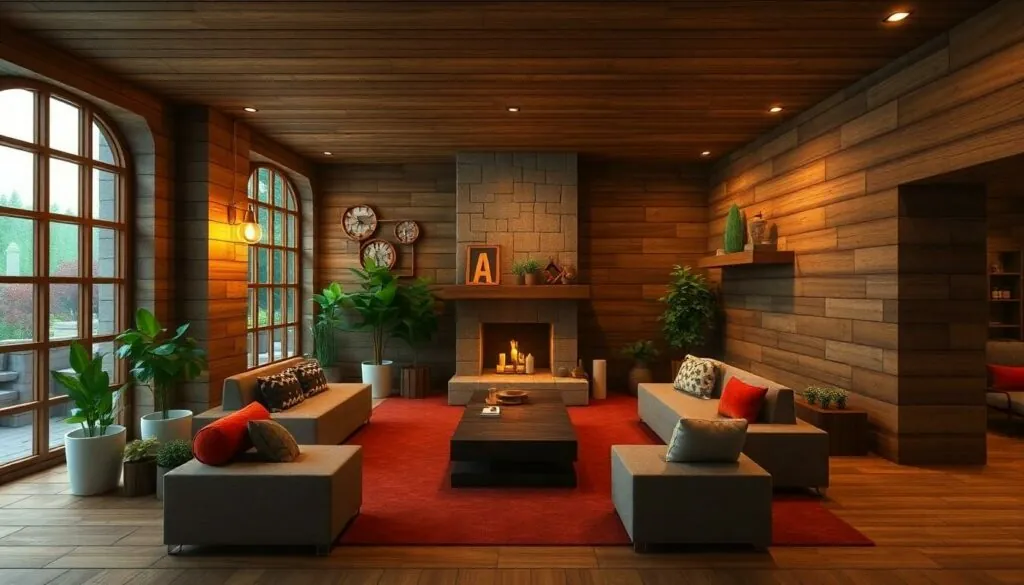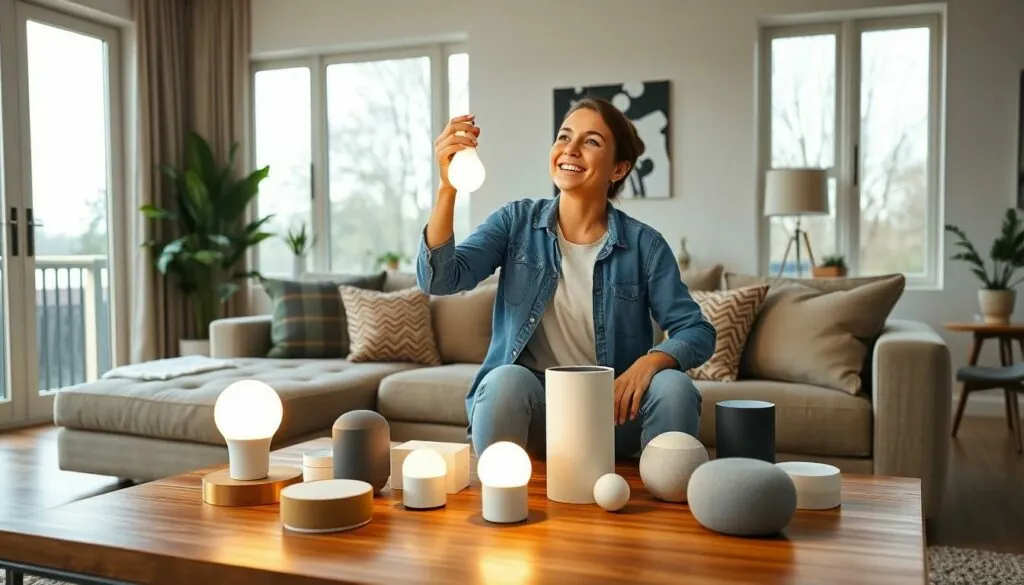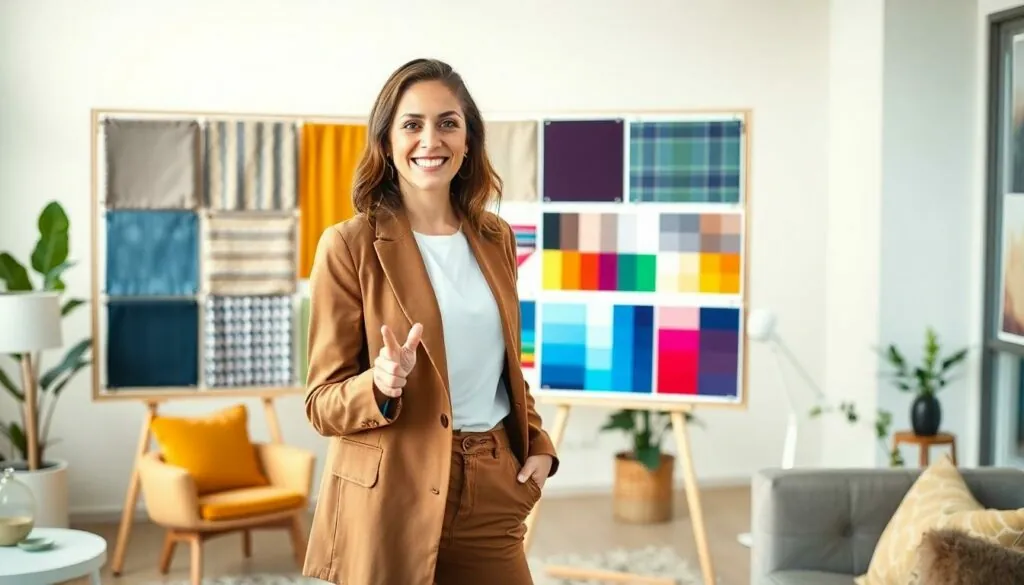When it comes to interior design, texture is the unsung hero that can transform a bland space into a sensory wonderland. Forget about just slapping on a coat of paint and calling it a day. Texture brings depth and personality to rooms, making them feel alive and inviting. Whether it’s the soft touch of a velvet sofa or the rustic charm of reclaimed wood, texture adds that special something that makes people say, “Wow, I want to live here!”
Table of Contents
ToggleUnderstanding Texture Interior Design
Texture in interior design refers to the surface quality of materials or fabrics, influencing the overall feel of a space. It plays an essential role in creating visual interest and tactile sensations within an environment.
Definition of Texture in Interior Design
Texture encompasses the tangible and visual characteristics of surfaces. Designers consider materials such as fabrics, woods, metals, and stones when discussing texture. Each material introduces unique qualities; for example, a smooth marble countertop contrasts with the roughness of exposed brick walls. This interplay among surfaces creates depth and dimension within a room.
Importance of Texture in Spaces
Texture significantly influences a room’s ambiance and comfort. It invites individuals to interact and engage with their surroundings. Soft textiles like cushions and throws create warmth, while hard materials like glass and metal can add a modern edge. Using a balanced mix of various textures ensures vibrant dynamics. These layers not only enhance aesthetics but also evoke emotional responses, making spaces feel more inviting and alive.
Types of Textures
Textures can be categorized into two main types: visual textures and tactile textures. Each type contributes uniquely to the overall design of a space.
Visual Textures
Visual textures refer to appearances that create an illusion of texture without physical interaction. Patterns on wallpapers, printed fabrics, and artwork can establish a sense of depth. Surfaces like polished metal or textured plaster catch light uniquely, enhancing a room’s aesthetic appeal. For instance, a geometric wallpaper can draw attention while adding visual interest. Artists often use techniques to imitate textures, offering a richer experience through decor. Consequently, the careful selection of visual textures can dramatically influence a room’s atmosphere.
Tactile Textures
Tactile textures engage the sense of touch, playing a crucial role in creating an inviting environment. Varieties like smooth glass, soft wool, and rough stone materials provide different sensory experiences. Incorporating these elements fosters a connection with the space. Warm blankets, plush cushions, and hard wooden surfaces add comfort and contrast. For example, a wool rug underfoot softens an area while balancing with leather seating. An effective mix of these textures enhances both the room’s functionality and its emotional impact, encouraging individuals to fully interact with their surroundings.
Techniques to Incorporate Texture
Incorporating texture enhances the overall design, adding depth and interest to interiors. Different techniques can elevate a space, making it feel more inviting.
Layering Textures
Layering different textures creates dynamic and visually rich environments. Combining materials such as wool throws, leather furniture, and silk cushions achieves depth. For instance, placing a soft rug over a hardwood floor softens the space while providing comfort. Mixing various fabrics can evoke a cozy atmosphere, encouraging interaction. Focus on achieving balance between soft and hard textures to avoid overwhelming the design. Each layer adds a unique tactile and visual experience.
Contrasting Textures
Contrasting textures generate dramatic interest within a space. Pairing smooth materials like glass or polished metal with rough surfaces, such as reclaimed wood or exposed brick, creates an engaging visual tension. For example, a sleek glass coffee table can sit atop a textured jute rug, blending modern with rustic. This contrast invites exploration and interaction, enhancing the ambiance. Selecting complementary colors helps unify these textures, allowing each element to shine. Focus on varying surfaces to create a harmonious yet striking aesthetic.
Popular Textures in Interior Design
Texture plays a critical role in defining spaces, with various types adding unique character and depth. Two prominent categories of textures include natural and synthetic options.
Natural Textures
Wood, stone, and organic fibers embody natural textures, bringing warmth and authenticity into interiors. Reclaimed wood floors offer rustic charm while large stone slabs add a sense of permanence. Materials like cotton and linen introduce softness, contributing to a cozy atmosphere. Incorporating plants also enhances natural textures, as the foliage brings life and color to a room. Designers often mix these elements for balance, ensuring a rich visual experience that resonates with the outdoors.
Synthetic Textures
Synthetic textures provide versatility and innovation in design. Fabrics like polyester and nylon are durable yet stylish, suitable for a range of applications from upholstery to curtains. Vinyl surfaces mimic natural materials while offering easier maintenance, appealing to busy homeowners. Faux fur and leather deliver luxurious aesthetics without compromising ethics, making them popular choices. These materials can also be used in creative layering, pairing with natural textures for a modern twist that balances comfort and sophistication.
Embracing texture in interior design transforms spaces into inviting havens. By skillfully mixing visual and tactile elements, designers can create environments that resonate with both comfort and style. The interplay of natural and synthetic materials not only enhances aesthetics but also fosters a deeper connection with the surroundings.
Thoughtfully layered textures evoke emotions and encourage interaction, making each room feel alive. As individuals explore these dynamic combinations, they discover the true essence of a well-designed space. Ultimately, texture is not just an accessory; it’s a fundamental aspect that breathes life into interiors, making them memorable and unique.




